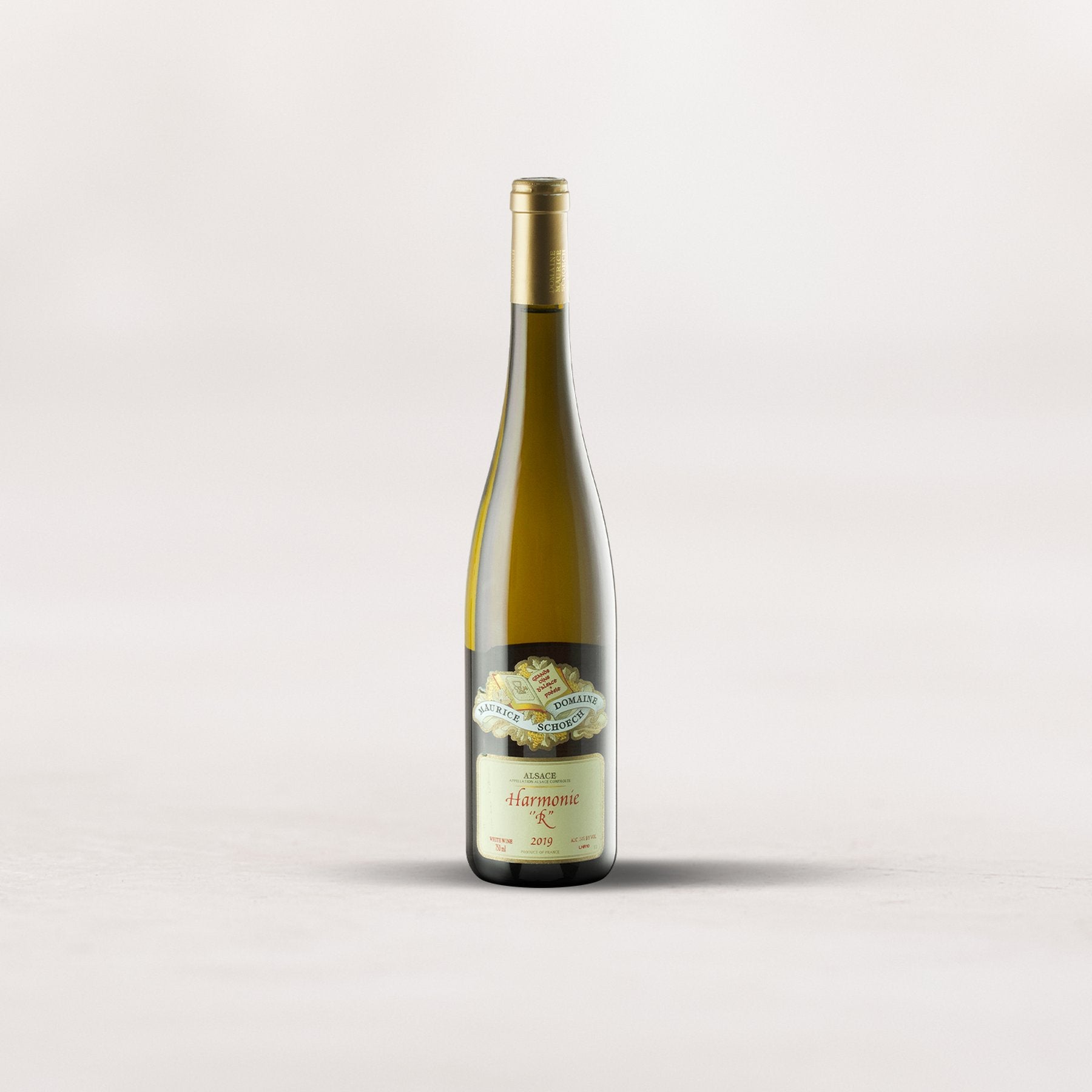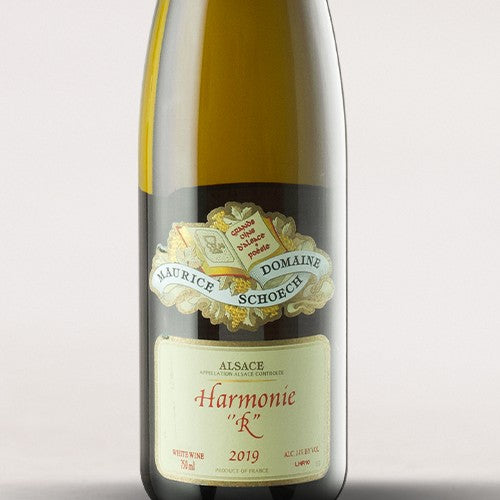The mere mention of “Rangen de Thann” sends an electric jolt down my spine: This universally hallowed vineyard is Alsace’s steepest and highest-elevation Grand Cru, and just a few treasured producers have the fortune of owning some of its precariously perched vines. Only one, however, has the courage to release a rare blend like Domaine Schoech’s “Harmonie R.” Owners of a fraction of one hectare, the Schoech family coaxes out a scant double-digit case production that is carefully allocated throughout the world. In 2019, that resulted in 10 cases for us.
I imagine keen eyes are wondering why the fabled phrases “Rangen de Thann” and “Grand Cru” aren’t proudly displayed across the front label—that’s what makes this obscure rarity such a daring effort. Instead of adhering to contemporary wine law, Schoech prefers to channel the vineyard’s Medieval-era history by bottling a true organic field blend of Riesling, Pinot Gris, and Gewürztraminer. Therefore, your only visual clue to this wine being a glorious product of Rangen de Thann is the letter “R” following “Harmonie.” The opulence of Grand Cru Pinot Gris, the intense mineral complexity of Riesling, the exotic perfumes of Gewürz…all of it’s there in vividly rich 8K resolution. Conclusion: This dry, luxuriously textured white blend must be owned by anyone striving to increase their understanding of legendary French terroirs!
Although we could dedicate multiple pages to detailing the numerous characteristics that make Rangen de Thann one of France’s most bewildering and prestigious Grand Crus, we’ll do our best to summarize it in a few sentences. This site has been continually producing grapes since the 1200s, and at 1,400+ feet, it is the highest-elevation Grand Cru in Alsace. It is also the steepest Grand Cru in the region, meaning it’s not only impossible to farm mechanically but extremely difficult to farm at all! This picture will provide all the evidence you’ll need. The soil of Rangen is primarily stone of volcanic origin, which makes it the only volcanic Grand Cru in Alsace. Clearly, this is a singular site that produces singularly majestic wines.
In terms of character, the wines of Rangen are revered for their immense power and concentration, derived from the site’s southern location and south-facing orientation. There’s also incredible minerality, structure, and freshness from its elevation, slope, and volcanic soils. Olivier Humbrecht, Alsace icon and the region’s first Master of Wine says: “You cannot exploit a vineyard as difficult as Rangen and make generic wine,” and marvels at how this hillside’s wines are reliably “powerful” and possessing “a fine, salty acidity that will never be sharp.” I personally identify the finest examples of this Grand Cru by the subtle flinty/volcanic aromatic note that is unlike anything else in Alsace. Altogether, it’s a complex and enthralling experience.
In 2000, the Schoech family leaped at the opportunity to acquire a minuscule parcel of Rangen de Thann Grand Cru that now produces the raw material for today’s special wine. The Schoech’s narrow slice of rows sits at the very top of Rangen and is composed primarily of Pinot Gris and Riesling, with a small amount of Gewürztraminer. These three noble Alsatian white grapes are harvested and pressed together to deliver a true “terroir wine.” Still, appellational law stipulates that a wine must be a single grape variety to bear (1) Rangen de Thann’s name and (2) a Grand Cru designation on the label. So, the Schoech family instead labels this remarkable blend “Harmonie R” and charges a respectable price. It's a win-win for everyone.
Schoech’s “Harmonie R” undergoes a long spontaneous fermentation in stainless steel before a year of maturation on lees. After bottling without fining, it then rests two years in the cellar before release. The powerful mineral backbone of Rangen is on full display but this is for those who want lush waves of fruits and mouthwatering savor. The Pinot Gris presents itself in the form of juicy yellow apple and apricot, the Riesling sprinkles in smoky citrus, and the hint of Gewürztraminer lends perfumed accents of lychee and rose water. It is at once lush and dry while boasting immensely textured layers that glide across an intense bed of volcanic minerality. I urge you to be a glutton and drink a couple of bottles now—as long as you promise to save one until at least 2025. You’ll be glad you did.











